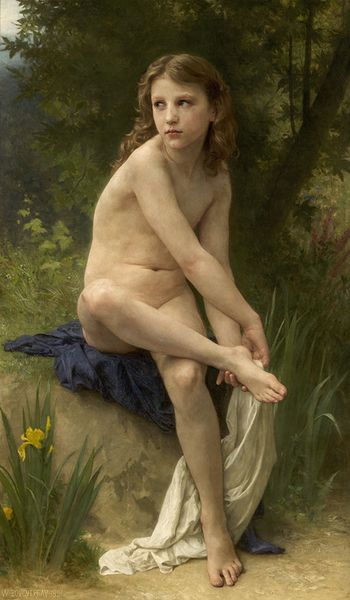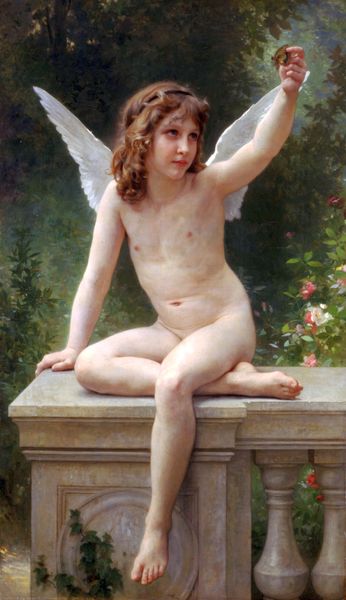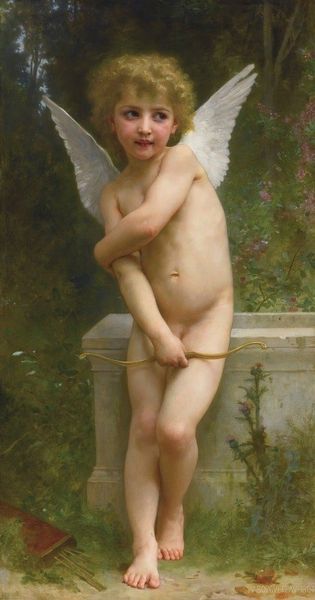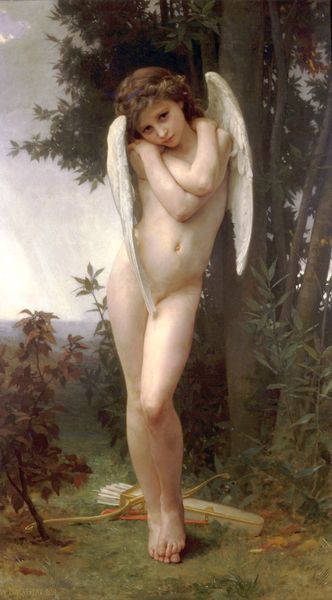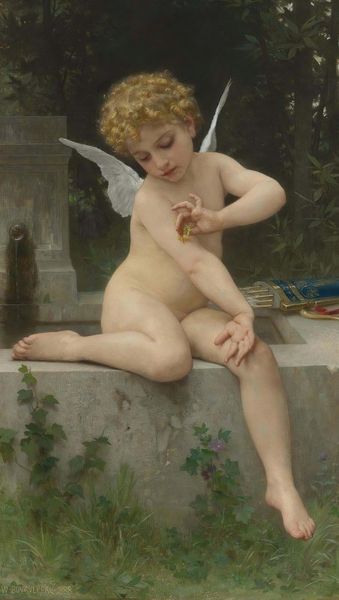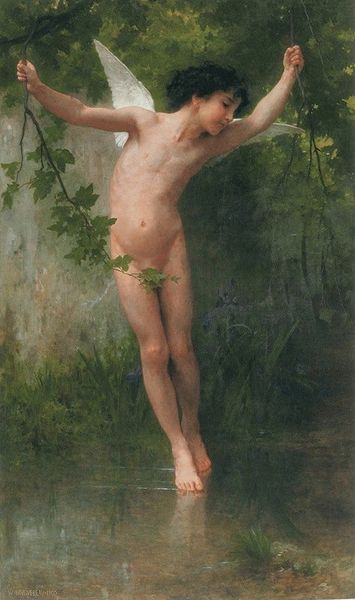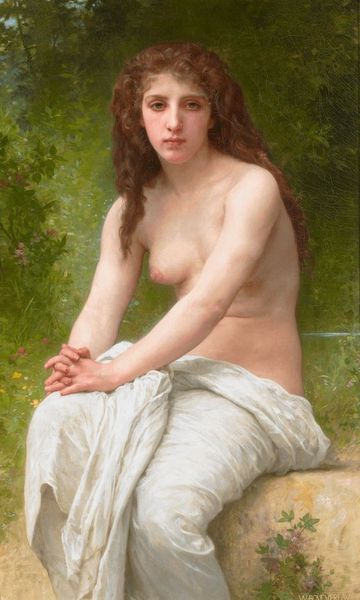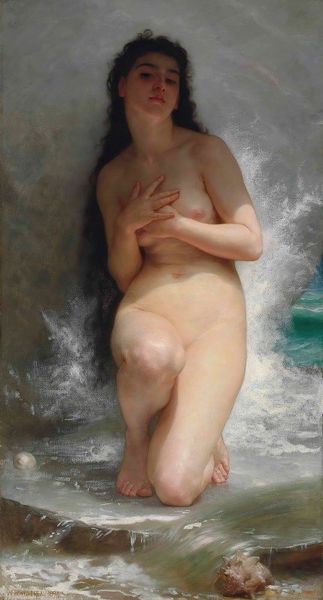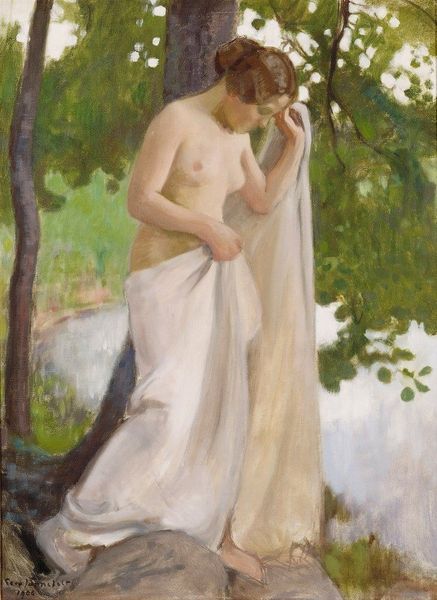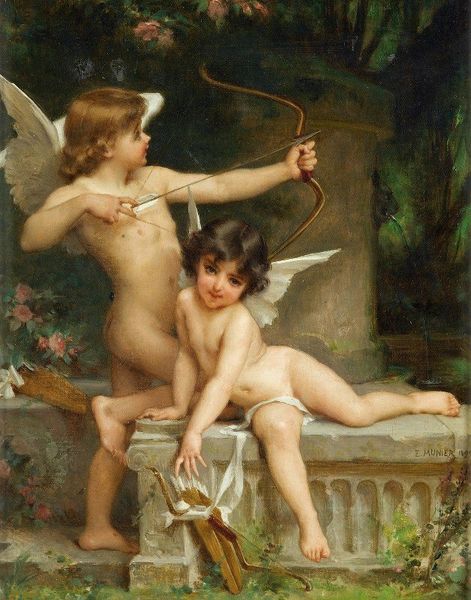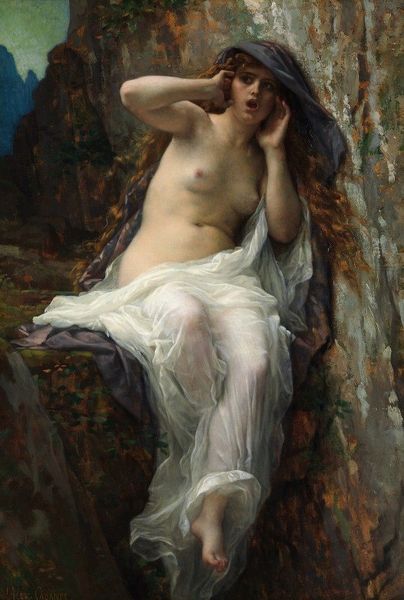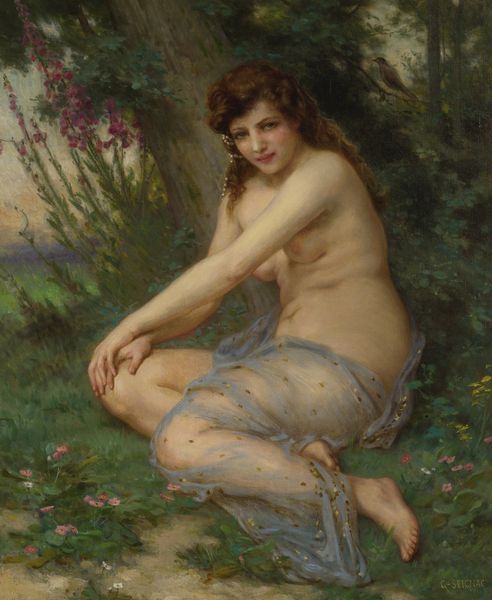
#
character pose
#
imaginative character sketch
#
green hue
#
fantasy illustration
#
green emphasis
#
green tone
#
character sketch
#
green based
#
green background
#
mythology
#
green
Copyright: Public Domain: Artvee
Curator: What a delicate and yet somehow unsettling scene. Editor: Yes, there's a strange quietness. We're looking at William Bouguereau's "Amour À L'affût," painted in 1890. The French title translates to "Love in Wait" or perhaps "Love on the Lookout." Curator: Bouguereau really mastered a certain academic polish. Look at the exquisite rendering of flesh tones and the soft gradations of light. But to me, this feels so much like sentimental pap, idealized love marketed to a bourgeoisie eager for pretty things. Is there any subversive intent? Any challenge to our understanding of Cupid and the ideals of beauty? Editor: I see something more complex in the formal arrangement. The figure's placement, seated on the stone, divides the composition almost symmetrically. The green background almost entirely isolates and elevates the central figure. I notice the bow and quiver, obviously elements, but so delicately painted so they hardly distract. And have you noticed how much of the work depends on color? Look how much of the painting depends on green hues. Curator: Of course the patron cared about visual pleasure, and clearly, his contemporaries valued the idealization of the nude, angelic figure that harked back to classical motifs of the era, but with children being thrust into work in those days, how does that imagery speak to what most experienced at that point in time? Did anyone confront the class dimensions inherent in such idealized figures? Editor: The figure is undeniably polished, embodying a highly idealized form. It speaks to a specific canon, particularly in its debt to classical sculptures and Renaissance paintings. Curator: Exactly! It reflects that late 19th-century obsession with supposed moral purity—yet displayed via very sexualized paintings in equally class-divided Salons and Museums. Editor: Perhaps Bouguereau uses that formal beauty to entice, to make palatable something potentially more subversive. To return the attention to detail, the cupid isn't merely posed; the expression suggests a moment of quiet observation, a prelude to action. What a technical and historical balancing act that may yet ask challenging questions today. Curator: Right! It may encourage people today to examine how images shape perceptions, and how art reflects its societal values and norms!
Comments
No comments
Be the first to comment and join the conversation on the ultimate creative platform.

